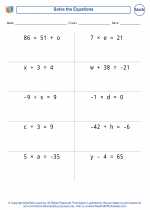One & Two Step Equations -> exponential functions
Exponential Functions
An exponential function is a mathematical function of the form f(x) = a * bx, where a and b are constants and b is the base of the exponential function. Exponential functions grow or decay at a constant percentage rate.
Key Concepts
- Base: The base of an exponential function is the constant b in the function f(x) = a * bx.
- Growth and Decay: Exponential functions can model growth when b > 1 and decay when 0 < b < 1.
- Exponential Growth Formula: The formula for exponential growth is f(x) = a * (1 + r)x, where a is the initial value and r is the growth rate.
- Exponential Decay Formula: The formula for exponential decay is f(x) = a * (1 - r)x, where a is the initial value and r is the decay rate.
- Graphing: The graph of an exponential function is a curve that either increases or decreases rapidly based on the value of b.
Study Guide
When studying exponential functions, it's important to understand the following:
- Identifying the base and understanding its effect on the function's behavior.
- Calculating the growth or decay rate from the given exponential function.
- Graphing exponential functions and interpreting their behavior.
- Applying exponential functions to real-world scenarios, such as population growth, compound interest, and radioactive decay.
Practice solving problems involving exponential functions to strengthen your understanding of the concepts. Work on identifying the type of growth or decay, calculating values based on the given function, and interpreting the results in context.
Additionally, familiarize yourself with the properties and applications of exponential functions in various fields, as they are widely used in mathematics, science, economics, and engineering.
Remember to seek help from your teacher or tutor if you encounter any difficulties, and utilize online resources and practice exercises to reinforce your knowledge.
.◂Math Worksheets and Study Guides Sixth Grade. One & Two Step Equations
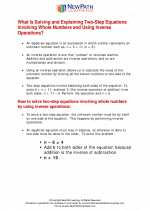
 Worksheet/Answer key
Worksheet/Answer key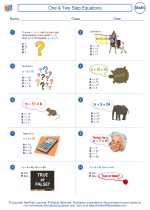
 Worksheet/Answer key
Worksheet/Answer key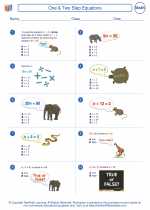
 Worksheet/Answer key
Worksheet/Answer key
 Worksheet/Answer key
Worksheet/Answer key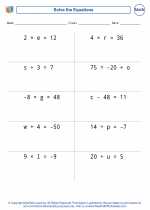
 Worksheet/Answer key
Worksheet/Answer key